Why You Should Eat Daikon Radish: Benefits And Recipes
Discover the surprising benefits of including this nutritious vegetable in your diet.
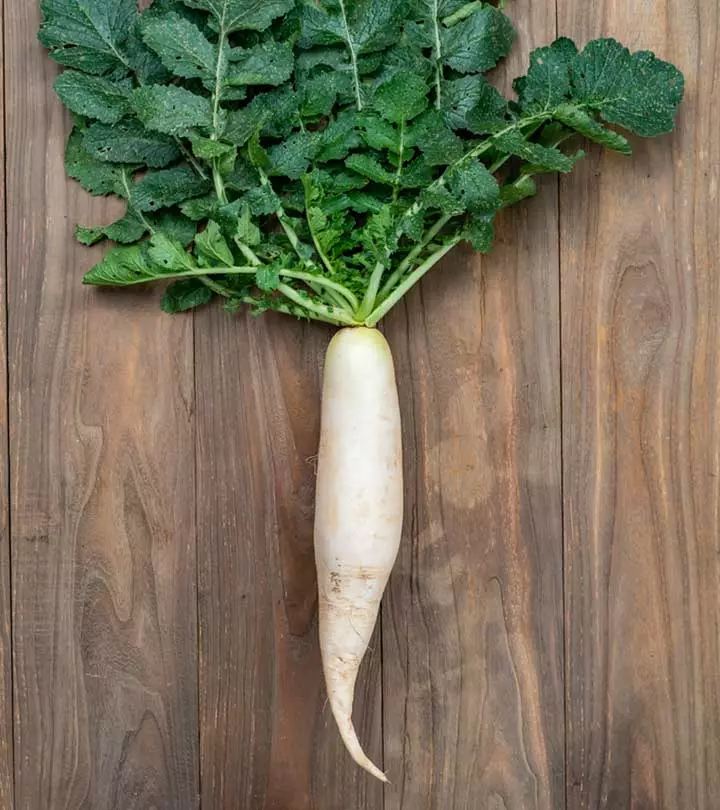
Image: Shutterstock
Daikon radish is included in several cuisines all over the world. Its texture makes it a crunchy snack. The many benefits of daikon radish can be attributed to its rich nutrient profile. The radish can also be added to many salads. Here, we discuss the major benefits, nutrition profile, and the recipes of daikon radish. Read on!
In This Article
What Is Daikon Radish?
Daikon radish is scientifically known as Raphanus sativus var. Longipinnatus. It is especially consumed in winters due to its abundant availability, and it offers an array of health benefits. It has a unique sharp taste and is popular in Japan. It usually grows in a cylindrical shape and resembles a carrot in texture.

 Trivia
TriviaDaikon radish is rich in vitamins and minerals. It is also available in different types. Let us check them out in the next section.
Key Takeaways
- Scientifically called Raphanus sativus var. Longipinnatus, daikon radish is mainly consumed during winters due to its sheer availability during this season.
- KN-Bravo, Alpine, Japanese Minowase, Shunkyo, Miyashige White, and Watermelon Radish are some of the types of daikon radish.
- Some easy to prepare and delicious daikon dishes are tangy daikon salad, spicy daikon curry, radish and lemon juice, radish beetroot smoothie, and pickled radish.
Types Of Daikon Radish
Daikon radish is usually available in white with green leaves. However, few other types of daikon come in peculiar colors.
- KN-Bravo: This daikon variety has purple skin. The flesh is light purple or white. It has a sweet flavor.
- Alpine: This daikon variety is whitish and has a sweeter taste compared to other varieties. It is used mostly in making Kimchi.
- Japanese Minowase: This daikon variety is the largest among all and has a sweet flavor. Japanese Minowases are white and have a crunchy texture.
- Shunkyo: This daikon variety is known for its mixed sweet and spicy flavor. It has pink stemmed leaves.
- Miyashige White: This daikon variety is white and grows as a cylindrical root. Its texture is crisp and it has a very mild flavor compared to other daikon varieties.
- Watermelon Radish: This daikon variety has a unique peppery and sweet taste. It has pink flesh and greenish skin. It grows spherically.
Daikon radish has a rich nutrition profile. Read on to know more.
Daikon Radish Nutrition Facts
Following are the nutrients in 100 grams of daikon radish (1):
- Calories: 20
- Water: 94.6
- Carbs: 4.1 grams
- Protein: 0.6 grams
- Fiber: 1.6 grams
Vitamins
- Vitamin C: 22 milligrams
- Folate: 32.5 micrograms
- Fiber: 1.86 grams
Minerals
- Phosphorus: 26.7 milligrams
- Calcium: 27 milligrams
- Magnesium: 16 milligrams
- Potassium: 227 milligrams
Daikon radish offers several health benefits. The following section elaborates them.
Health Benefits Of Daikon Radish
Daikon radish is more than just a crunchy addition to your meals—it is packed with surprising health perks. It has all the benefits of radish. Keep reading forward to discover how this humble veggie can boost your well-being and why it’s worth adding to your diet.
1. May Help Manage Diabetes
Research shows radish has insulin-like polyphenols that act as anti-diabetic compounds. Additionally, Japanese radish was found to reduce the levels of plasma insulin in diabetes rats. This mechanism effectively combats diabetes and also helps in maintaining glucose-related hormones (2).
2. May Aid Weight Loss
In an animal study, radish was found to potentially promote weight loss if consumed regularly. Radish may promote weight loss by decreasing leptin and adiponectin, which are hormones that may induce weight gain (3). Radish also manages lipids effectively and may promote weight loss. Raw daikon radish can be taken as a salad or a side dish.
3. May Promote Skin Health
Anecdotal evidence suggests that regular consumption of radish promotes skin health. Radish contains silicon (4). Silicon is required for collagen synthesis. As per a study, silicon improves skin elasticity and strength (5).
4. May Support Digestive Health And Gut Function
Daikon radish contains fiber, which plays a crucial role in digestion. Including 1 or 2 servings of raw or steamed daikon in your diet can have a positive impact on your digestive health.In a study, radish leaves were identified as potential substitutes for dietary fiber (6). These leaves are also known to improve gastrointestinal function. You can add them to your salads or use them as toppings on smoothies to reap the benefits.
5. May Promote Kidney Health
As per some research, intake of radish juice may increase urinary excretion of calcium oxalate. It seems that daikon radish may decrease the accumulation of minerals in the urinary tract and reduce the risk of stone formation (7). However, concrete research is quite scarce in this regard. Consult your doctor before you choose a radish-based diet for treating kidney stones.
6. May Minimize Cancer Risk
Research shows radishes may have potent anti-cancer properties. They are enriched with different bioactive compounds that exert various anti-cancer mechanisms. Radish can exhibit anti-cancer effects in colon cancer, liver cancer, breast cancer, cervical cancer, lung cancer, and prostate cancer. Daikon radish is rich in secondary metabolites that have anti-cancer properties (8).
7. May Help Manage Hypertension
Radish leaves are antihypertensive. Animal studies have shown that leaf extracts of radish significantly increased nitric oxide production, which can have an antihypertensive effect (9). However, human studies are limited in this regard. It is highly recommended to consult your doctor before including radish leaves in your diet for its purported antihypertensive effects.
8. May Help Treat Fungal Infections
As per a study, radishes contain an antifungal compound called RsAFP2. This compound has antifungal properties and may inhibit the growth of Candida albicans, a fungus that causes infections in humans (10).
Including daikon radishes regularly in your diet may help minimize the recurrent Candida fungal infections in humans. However, more research is warranted in this regard.
9. May Help Treat Cough And Cold
Anecdotal evidence suggests that radish may relieve congestion in the throat. Its pungent taste may clear out the pain and soreness in the throat and loosen phlegm. However, clear scientific research is lacking in this regard.
 Did You Know?
Did You Know?10. May Fight Oxidative Damage
The antioxidants in daikon radish may help protect the body from oxidative damage. These antioxidants may fight free radicals and potentially reduce the signs of premature aging. However, more research is warranted in this regard.
These are the major benefits of daikon radish. Incorporating it into your daily diet can do wonders for your health. Check out the following delicious recipes with daikon radish!
5 Simple Easy And Delicious Daikon Radish Recipes
1. Tangy Daikon Salad
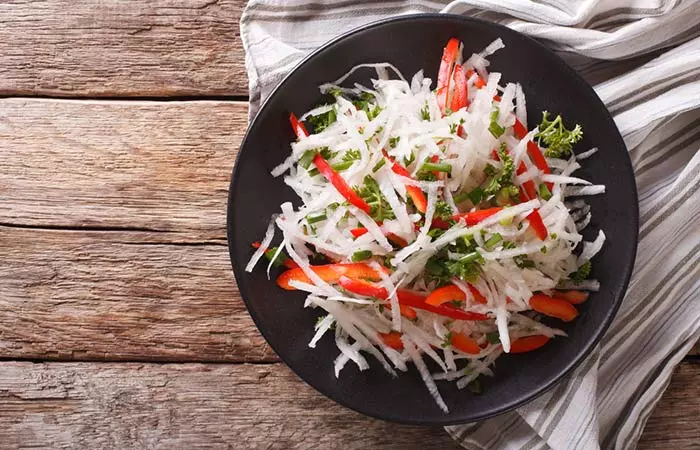
What You Need
- 1 medium daikon radish
- 1 medium bell pepper
- Chopped cilantro
- Lemon juice (from one lemon)
Method
- Slice the daikon into pieces and grate it into fine threads.
- Add a pinch of salt to it and allow it to rest for 10 minutes.
- Squeeze the liquid after 10 minutes and transfer it into a mixing bowl.
- Add finely chopped bell pepper and cilantro.
- You can sprinkle some black pepper powder for added spiciness.
- A tablespoon of mayonnaise can be added to the salad to impart a creamy texture.
- Sprinkle some lemon juice and consume immediately without storing it.
2. Spicy Daikon Curry
What You Need
- 1 medium daikon radish
- 1 cup of grated coconut
- 1 tablespoon of cumin powder
- ½ a tablespoon of pepper powder
- 1 teaspoon of salt
- ½ a tablespoon of turmeric powder
- 1 medium onion
- 2 green chilis
- 1-inch garlic
- 1 tablespoon of oil
- ½ a tablespoon of mustard seeds
- Few curry leaves
Method
- Peel the daikon and grate into fine threads.
- Wash it in saltwater.
- Squeeze out the extra water and transfer it into a mixing bowl.
- Add ½ a tablespoon of turmeric and ½ a tablespoon of salt. Keep the mixture aside.
- In a food processor, add the onion pieces, cumin powder, pepper powder, green chilies, curry leaves, grated coconut, garlic pods, ginger, and ½ a tablespoon of salt. Make it into a coarse paste.
- Heat a pan and transfer the daikon turmeric and salt mixture and cook on a low flame until it releases all the water.
- After 5 minutes, add the coconut paste and stir it well.
- Cover with a lid and let it simmer for 10 minutes.
- In a separate pan add a teaspoon of oil and add mustard seeds. Let them splutter and add this to the cooked daikon.
- Add some cilantro and switch off the flame.
3. Radish And Lemon Juice
What You Need
- 1 medium daikon radish
- 2 tablespoons of honey
- 1 lemon
- Few mint leaves
- Crushed ice
Method
- Peel the radish and wash it in saltwater.
- Cut it into pieces and soak in saltwater to minimize the sharp taste and pungent smell.
- After 15 minutes, drain the excess water out and transfer it to a blender jar.
- Add 2 tablespoons of honey, crushed ice, and squeeze the lemon.
- Blend it into a fine paste until you get enough liquid.
- Sieve the juice and discard the residue.
- Garnish with mint leaves and consume immediately without storing.
4. Radish Beetroot Smoothie
What You Need
- 1 medium daikon radish
- 1 medium beetroot
- 1 cup yogurt
- ½ a teaspoon of salt
- 1 lemon
- Black pepper powder, as needed
- Few mint leaves
Method
- Peel the radish and wash it in saltwater.
- Cut it into pieces and soak in saltwater to minimize the sharp taste and pungent smell.
- After 15 minutes, drain the excess water and transfer it to a blender jar.
- Peel the beetroot and slice it.
- Add to the blender.
- Add salt and yogurt and blend to a smooth paste.
- Transfer the smoothie into a serving dish and sprinkle some black pepper powder.
- Squeeze the lemon and garnish it with mint leaves.
- Do not store it as the color may change after 3 to 4 hours.
- Consume immediately after preparation.
5. Pickled Radish
What You Need
- 1 medium daikon radish
- 1/3 cup of white sugar
- 1 teaspoon of salt
- 1 cup of warm water
- 1/3 cup of white vinegar
Method
- Peel the radish and wash it in saltwater. Allow it to dry completely for an hour.
- Cut it into cubes and keep them aside.
- In a mixing bowl add 1 cup of warm water and ⅓ cup of white sugar.
- Stir until the sugar dissolves.
- Add 1 teaspoon of salt and ⅓ cup of white vinegar. Mix all the ingredients.
- Add the radish cubes and mix them with a wooden spoon.
- Transfer the mixture into a glass jar and refrigerate before serving for at least 2 hours.
- This pickle can be stored for at least 2 weeks in a refrigerator.
Rebecca, a blogger, has tried an interesting recipe with daikon radish and shared her experience in a blog post. She says “This will make a lovely condiment alongside Asian or Indian food. And I’m thinking that, like sauerkraut, it’s going to be great on pork (i)”.
How To Select And Store Daikon Radish
Always select those that are heavy and taut. They should also be solid and have a slightly pungent smell. Their skin must be soft.
Fresh daikon can be stored for at least two weeks by wrapping it with a damp cloth or a plastic bag. The leaves should be stored separately in a plastic bag. Alternatively, they can also be chopped and sealed in a plastic bag (to retain freshness) and stored in a refrigerator.
Do not freeze daikon or its greens as they may lose the flavor.
Daikon radish is packed with many nutrients and is especially a watery vegetable. Including it in your diet can benefit your overall health. However, few may not like its pungent smell and sharp taste. You may try mixing it with other bland ingredients like coconut paste to make it more palatable. Try any of the above-mentioned recipes and start consuming daikon radish today!
Frequently Asked Questions
Is daikon a superfood?
Yes, with its detoxification and immune-boosting benefits, daikon has been considered a superfood in many parts of the world.
Is daikon anti-inflammatory?
Yes, daikon is rich in phenolic compounds known to have anti-inflammatory properties (11).
Is daikon good for the thyroid?
Excessive daikon intake may affect thyroid hormone production (12). Therefore, avoiding daikon if you have any pre-existing thyroid conditions is advisable.
Is daikon high in sugar?
Daikon has 2.5g of sugar per 100g of the vegetable and is mildly sweeter than white radish (1).
Is daikon acidic or alkaline?
With a pH of 7.5, daikon is an alkaline food.
How long does daikon last in the fridge?
Daikon can last about 2 weeks when stored adequately wrapped in the fridge.
What is the difference between daikon and white radish?
Daikon is a winter radish that resembles a white carrot. It is juicier, sweeter, and less intense than the usual white radish.
This video delves into the incredible health benefits of Daikon radish and the nuances in taste across its various parts. Explore the versatility of this root widely consumed in Japan. Check it out now!
Personal Experience: Source
StyleCraze's articles are interwoven with authentic personal narratives that provide depth and resonance to our content. Below are the sources of the personal accounts referenced in this article.
(i). Preserving Floyd: Further Adventures in Fermenting – Daikon Radishhttps://eatingfloyd.blogspot.com/2012/10/preserving-floyd-further-adventures-in.html
References
Articles on StyleCraze are backed by verified information from peer-reviewed and academic research papers, reputed organizations, research institutions, and medical associations to ensure accuracy and relevance. Read our editorial policy to learn more.
- Radish
https://fdc.nal.usda.gov/fdc-app.html#/food-details/168451/nutrients - Radish (Raphanus sativus) and Diabetes
https://www.ncbi.nlm.nih.gov/labs/pmc/articles/PMC5622774/ - Effect of Fresh Red radish Roots Juice on some Bio-marker for hypertrophy of adipose tissue in Obese Rats
https://bnni.journals.ekb.eg/article_108366.html - Bioactive Compounds for Skin Health: A Review
https://www.ncbi.nlm.nih.gov/pmc/articles/PMC7827176/ - Use of silicon for skin and hair care: an approach of chemical forms available and efficacy*
https://www.ncbi.nlm.nih.gov/labs/pmc/articles/PMC4938278/ - Effect of Radish Leaves Powder on the Gastrointestinal Function and Fecal Triglyceride and Sterol Excretion in Rats Fed a Hypercholesterolemic Diet [2008]
https://agris.fao.org/agris-search/search.do?recordID=KR2009001541 - Influence of radish consumption on urinary calcium oxalate excretion
https://pubmed.ncbi.nlm.nih.gov/15449653/ - Deciphering the Nutraceutical Potential of Raphanus sativus—A Comprehensive Overview
https://www.ncbi.nlm.nih.gov/labs/pmc/articles/PMC5622774/ - The antihypertensive effect of ethyl acetate extract of radish leaves in spontaneously hypertensive rats
https://pubmed.ncbi.nlm.nih.gov/22977684/ - The plant defensin RsAFP2 induces cell wall stress septin mislocalization and accumulation of ceramides in Candida albicans
https://onlinelibrary.wiley.com/doi/full/10.1111/j.1365-2958.2012.08017.x - Profiling of Phenolic Compounds and Antioxidant Activity of 12 Cruciferous Vegetables – PMC
https://www.ncbi.nlm.nih.gov/pmc/articles/PMC6100362/ - Effect of radish (Raphanus sativus Linn.) on thyroid status under conditions of varying iodine intake in rats
https://pubmed.ncbi.nlm.nih.gov/16924836/
Read full bio of Serena Benali
Read full bio of Aparna Mallampalli
Read full bio of Ravi Teja Tadimalla
Read full bio of Payal Karnik









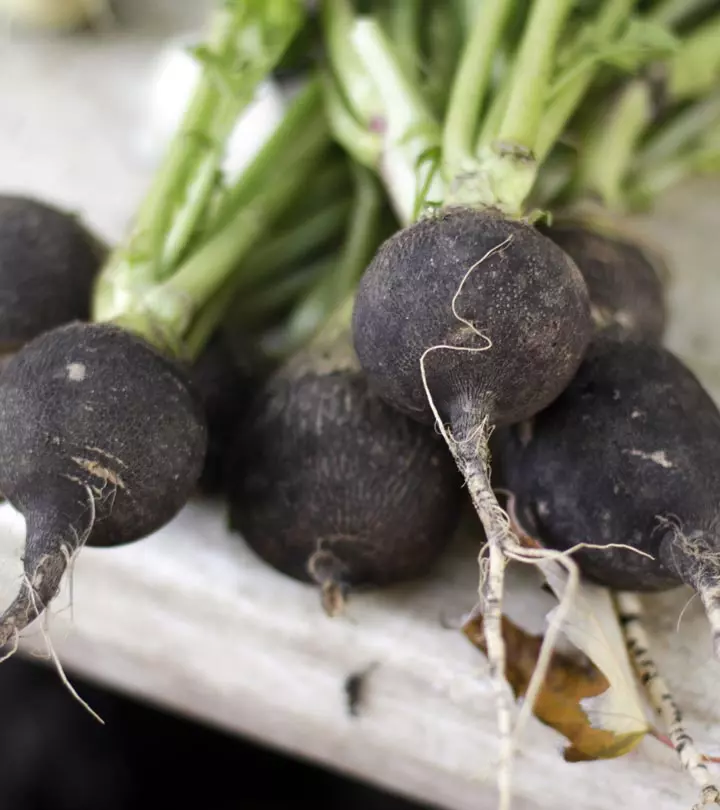
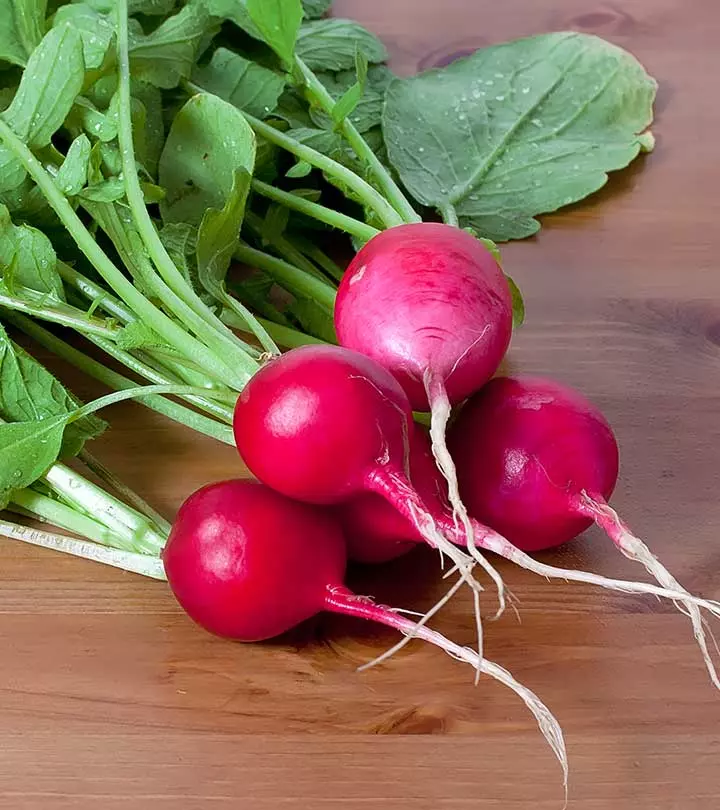
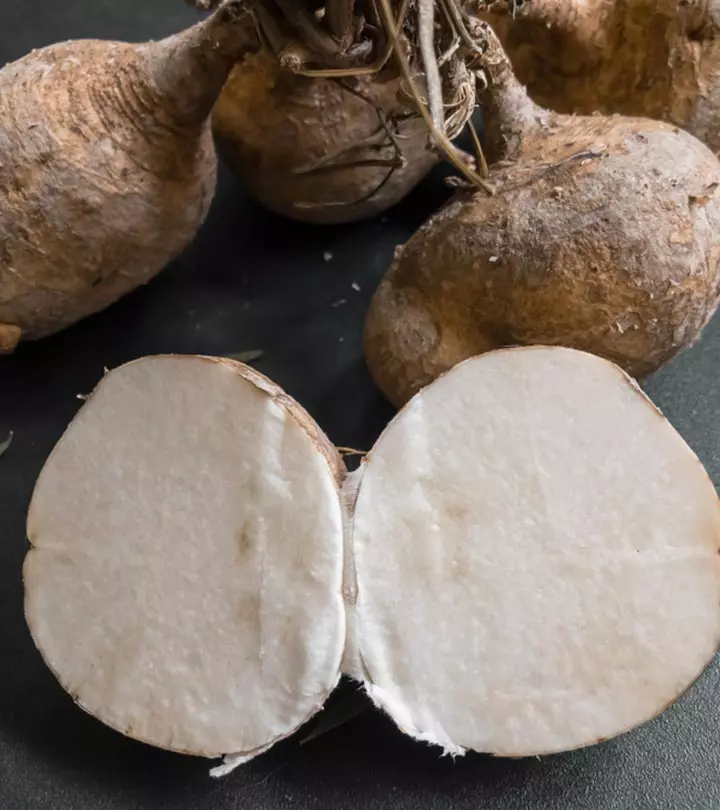
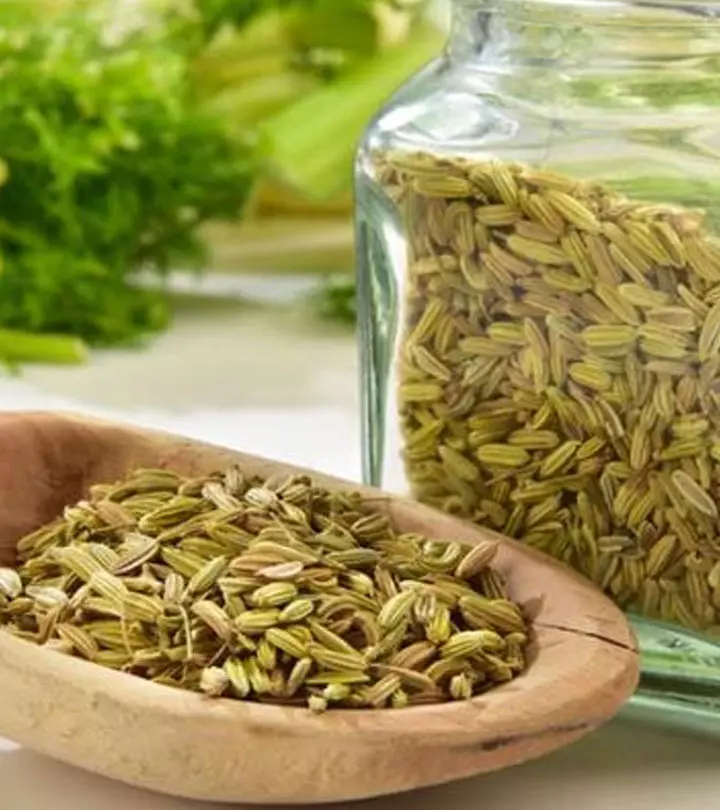


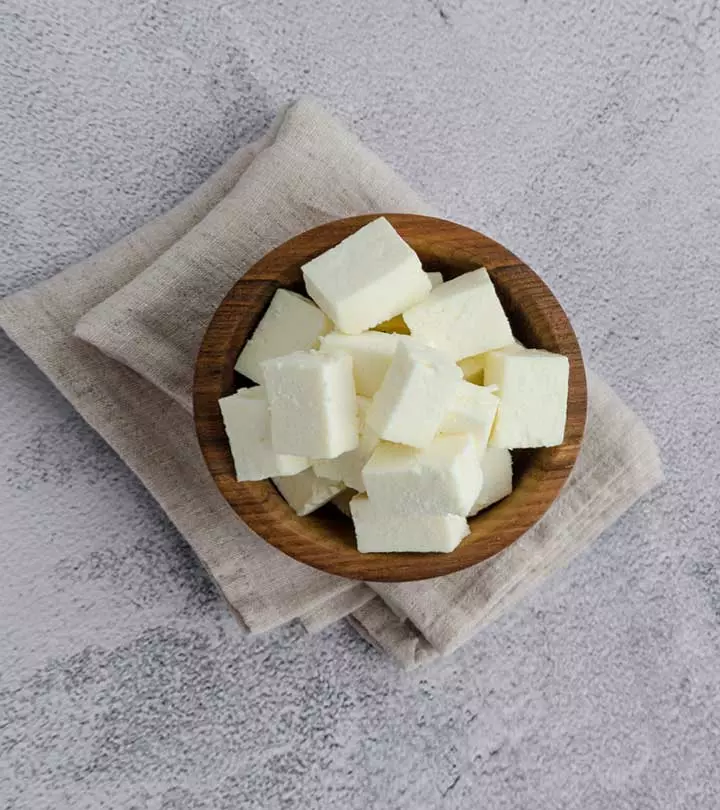
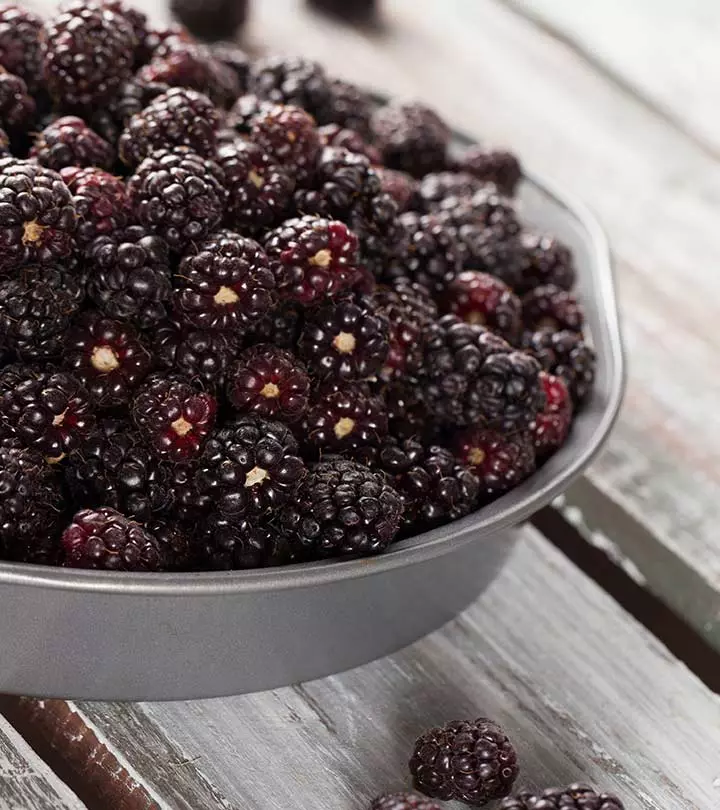



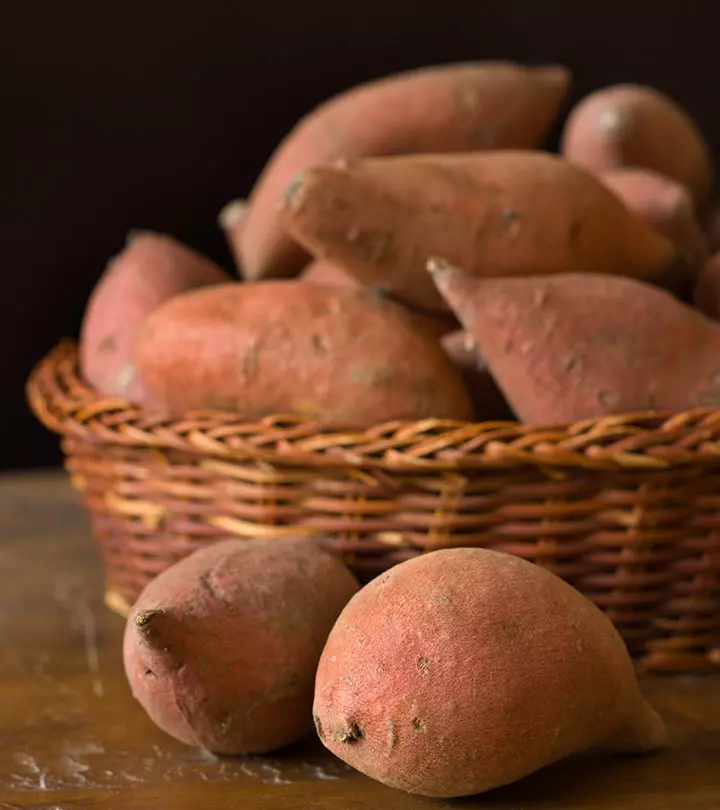

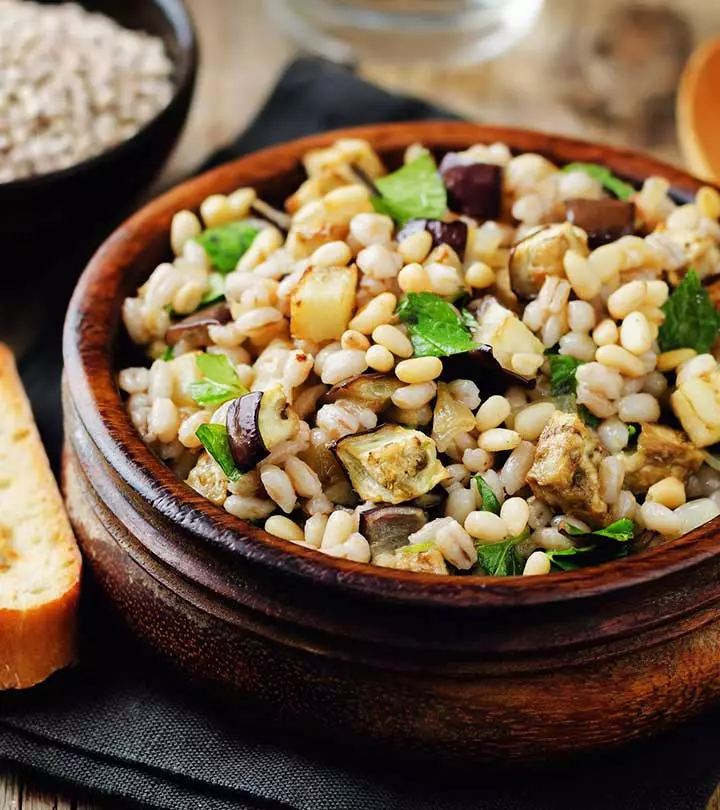

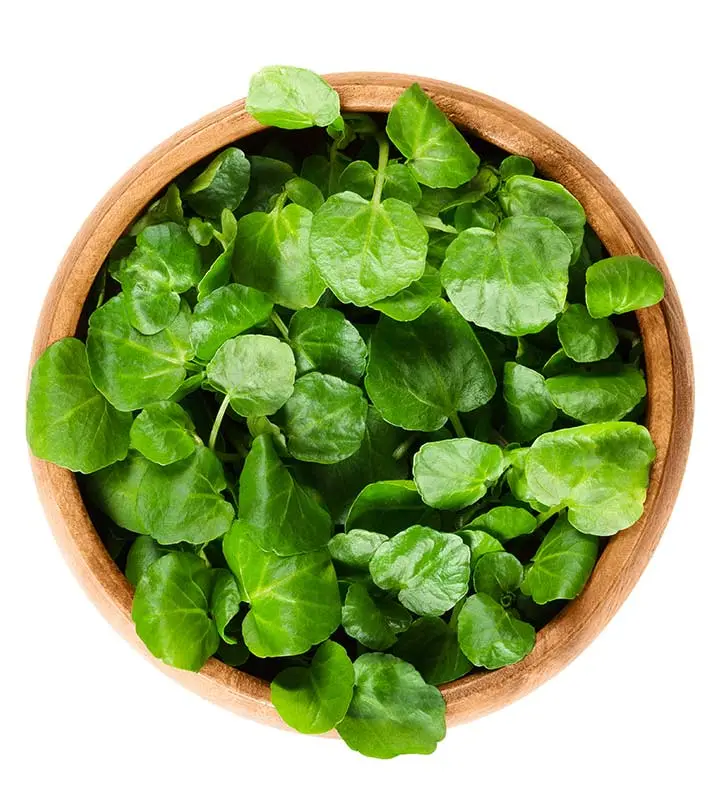
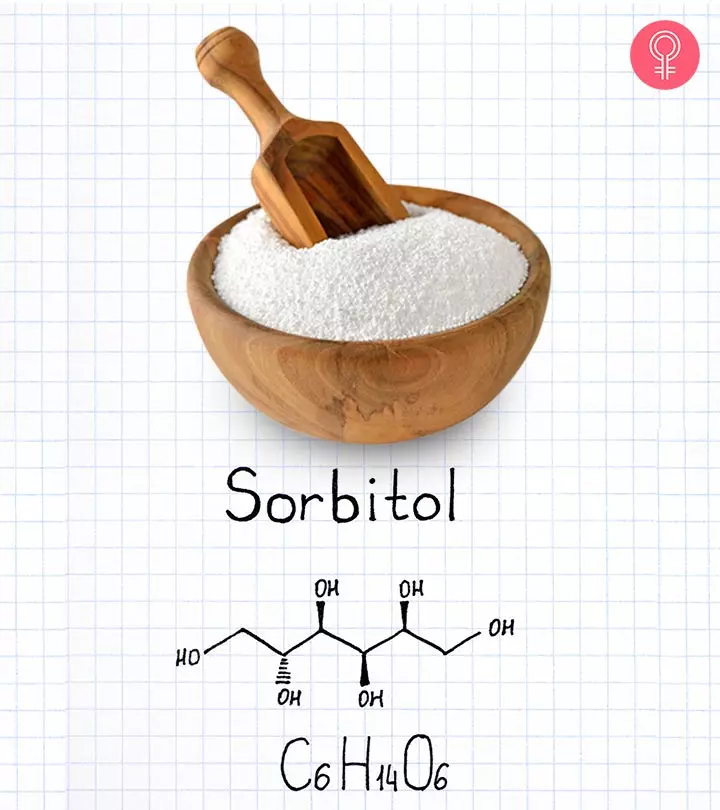
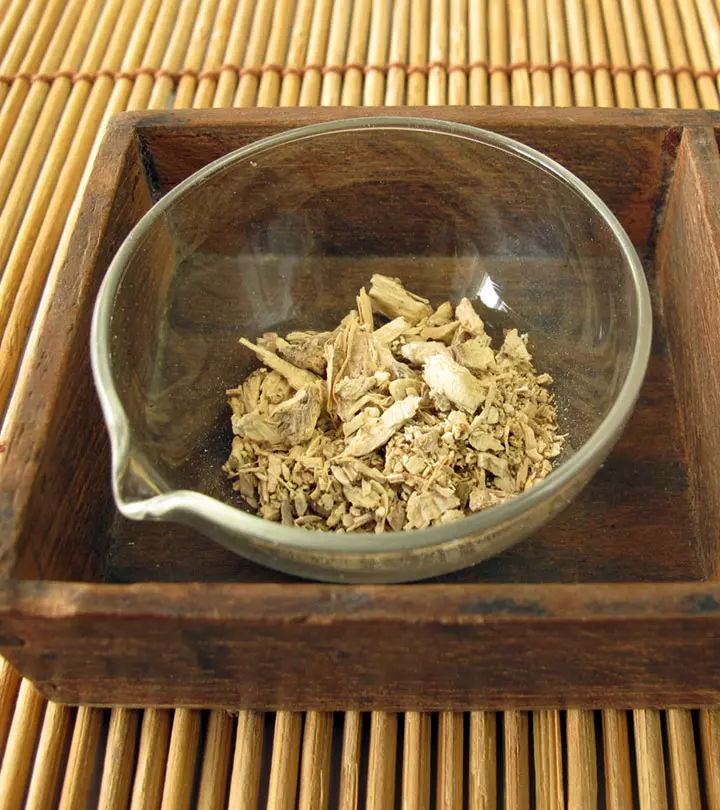
Community Experiences
Join the conversation and become a part of our empowering community! Share your stories, experiences, and insights to connect with other beauty, lifestyle, and health enthusiasts.